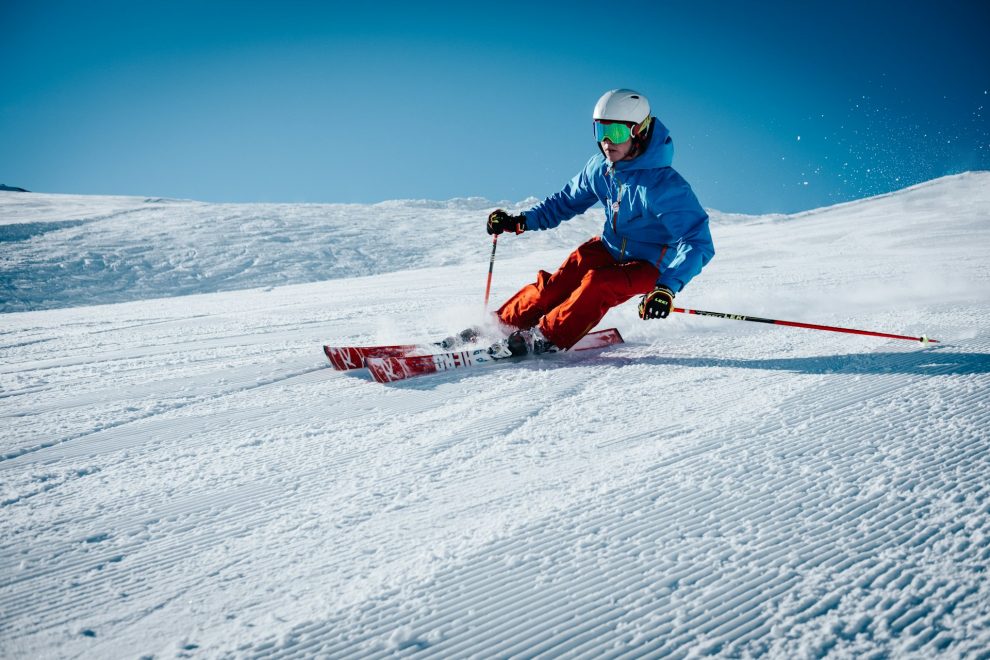Whether you’re heading out on your first ski trip or looking to upgrade your gear, you need the right gear for the mountain. Skiing is hard on the body and extremities, especially in the cold so having the right winter gloves, skis and other essentials is key. This guide will walk you through everything you need to know about ski gear, with a focus on men’s ski gloves – a must have for any outdoor enthusiast. Discover a full range of ski gear at Naski Sports.
1. Skis
First on your list is a good pair of skis. If you’re new to the sport choose skis for beginners that offer mobility and ease of use. All-mountain skis are versatile and great for learning on different terrain, from groomed runs to off-piste powder.
Top tip:
- Choose skis that fit your height and weight for better control.
2. Ski Poles
No ski checklist is complete without ski poles. These aren’t just an accessory – they’re essential for balance, timing your turns and navigating tricky terrain. Choose poles made from durable materials like aluminum or carbon fibre and make sure they fit your height.
Top tip:
- Look for adjustable ski poles for versatility on the mountain.
3. Men’s Ski Gloves: Your Most Important Layer of Protection
When it comes to skiing your hands are one of the first parts of your body to feel the cold. Men’s ski gloves or ski mitts are essential for keeping your fingers warm in the snow, and providing the grip and protection you need. Choose gloves that are waterproof and have high quality insulation to keep you warm in freezing temperatures.
Softshell ski gloves are great for flexibility and breathability while mittens keep your fingers together for added warmth. Brands like The North Face and Burton offer a wide range of ski gloves in different styles and colours to suit you.
Top Features of Men’s Ski Gloves:
- Waterproof materials (Tex or Gore-Tex fabrics).
- Insulation for cold weather.
- Breathable fabrics to prevent overheating.
- Reinforced thumb and finger areas for durability.
- Wind and snow resistance to keep out the elements.
- Available in different colours and designs to match your gear.
Example brands:
- The North Face
- Racer
- Burton
Top tip:
- Always try on multiple pairs of men’s gloves to find the perfect fit that balances warmth, mobility and comfort.
4. Ski Jacket and Pants
To stay warm you’ll need a good ski jacket and pants. Look for technical features like waterproof fabric, taped seams and multiple layers of insulation. Softshell fabric is popular with skiers as it’s breathable and keeps snow and wind out.
Top tip:
- Choose a jacket with enough room for layering so you can adjust to changing conditions.
5. Ski Helmet
A helmet is a must for safety on the mountain. Look for helmets with breathable and lightweight materials and make sure it fits snugly but not too tight. Some helmets have built in fleece linings to keep your head warm on colder days.
Top tip:
- Choose a helmet that fits well with your goggles to avoid gaps and discomfort.
6. Base Layers
Base layers are key to keeping your body warm on the mountain. Look for fabrics that wick away moisture and keep you warm like merino wool or synthetic blends. These layers will keep you dry and warm even if you’re sweating.
Top tip:
- Don’t use cotton as it holds moisture and will make you feel cold and uncomfortable.
7. Ski Socks
Your feet are another part of your body that can feel the cold quickly. Ski socks with built in insulation and moisture wicking properties are a must for comfort and warmth. Make sure the socks fit snugly but not too tight.
Top tip:
- Choose socks that are padded in key areas like the shins for extra protection.
8. Goggles
Clear vision is essential on the mountain and goggles are your best friend for blocking wind, snow and harmful UV rays. Choose goggles with anti-fog features and interchangeable lenses for different light conditions.
Top tip:
- Polarised lenses can help reduce glare on bright days.
9. Ski Mittens vs Ski Gloves: Which is best?
While men’s ski gloves are popular, some skiers prefer ski mittens as they keep your fingers together for extra warmth. Ski mittens are ideal for very cold days but gloves offer more dexterity so you can grip your poles and adjust your gear. Some skiers carry both gloves and mitts to meet changing conditions.
Top tip:
- If you want the best of both worlds, look for hybrid mittens that combine a glove’s dexterity with a mitten’s warmth.
10. Accessories
Don’t forget the smaller but still important accessories like neck gaiters, face masks and ski poles. These little things can make a big difference to your comfort and performance on the mountain.
Top tip:
- Layering is key, so always pack extra winter gloves, socks and a neck gaiter in case conditions change.
Conclusion: Get Ready for Skiing
When you’re heading out on your first ski trip having the right gear is not only important for safety but will make your day on the mountain so much more enjoyable. Men’s ski gloves are a key part of keeping your hands warm, dry and able to grip your ski poles with confidence. Whether you’re looking for softshell ski gloves, winter mitts for extreme conditions or budget options the most important thing is finding gear that meets the demands of the sport and keeps you comfortable and protected.
With the right combination of warmth, protection, and breathability, you’ll be ready to hit the slopes and enjoy your time on the mountain!








Add Comment